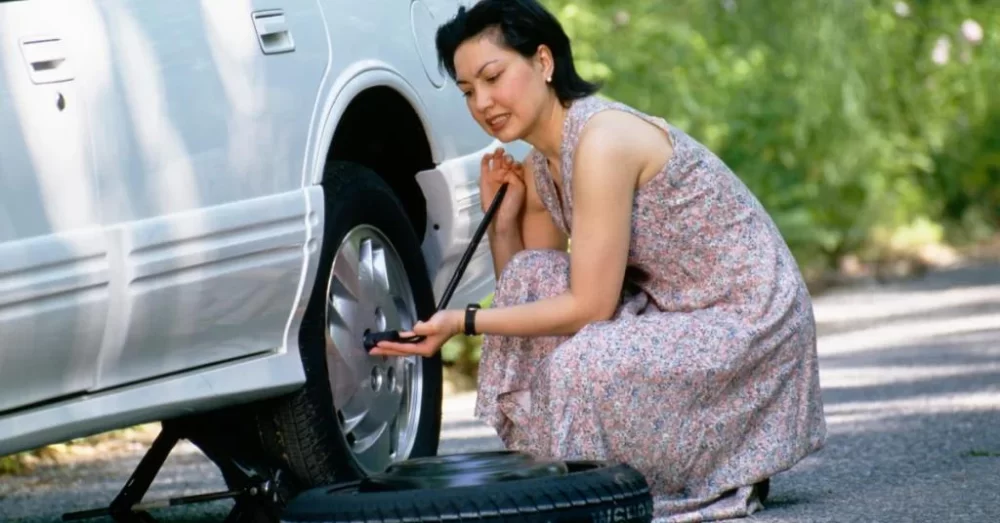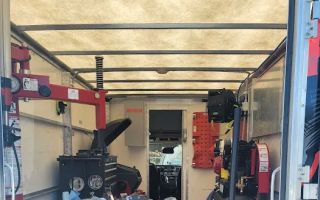- Immediate Steps After Noticing a Flat Tire on the Highway
- Safely Changing a Flat Tire on the Highway
- Tools and Preparations Needed for Highway Tire Change
- When to Call Professional Roadside Tire Change Services
- Real-Life Case Study: Highway Flat Tire Replacement
1. Immediate Steps After Noticing a Flat Tire on the Highway
Experiencing a flat tire on the highway can be alarming and dangerous if not handled properly. The first priority is to stay calm and assess the situation carefully. When you detect the flat tire—often indicated by a sudden vibration or difficulty steering—gradually reduce your speed without abrupt braking. Look for a safe area to pull over, such as the highway shoulder or an emergency lane, where you can park far from active traffic.

MR. TIRE INC.
2078 New York Ave, Huntington Station, NY 11746, USA
1.1 Use Hazard Lights and Safety Signals
Once you find a safe spot, turn on your hazard lights immediately to alert other drivers. If available, set up warning triangles or flares behind your vehicle to further increase visibility. These steps are crucial to ensure your safety and the safety of other motorists while you handle the flat tire situation.

MR. TIRE INC.
2078 New York Ave, Huntington Station, NY 11746, USA
1.2 Avoid Stopping on Curves or Narrow Shoulders
Choosing a spot with good visibility is essential. Avoid stopping on sharp bends or narrow shoulders where oncoming traffic may not see your vehicle in time. The goal is to create as safe an environment as possible for changing the tire or waiting for help.
2. Safely Changing a Flat Tire on the Highway
Knowing how to get a flat tire changed on the highway safely involves more than just having the right tools—it requires methodical steps and vigilance.
2.1 Setting Up Your Vehicle
Before you start changing the tire, engage the parking brake and put the vehicle in park (or first gear for manual transmissions). This prevents the car from rolling during the tire change. Place wheel wedges or blocks behind the tires opposite the flat one for extra security.
2.2 Removing the Flat Tire
Using a lug wrench, slightly loosen the lug nuts while the wheel is still on the ground. Then, use a jack to lift the car, ensuring it is placed securely at the manufacturer’s recommended jacking point. Once elevated, remove the lug nuts completely and take off the flat tire.
2.3 Installing the Spare Tire
Mount the spare tire on the hub, align it properly, and hand-tighten the lug nuts. Lower the car back to the ground slowly, then use the lug wrench to tighten the nuts in a star pattern. This ensures even pressure and proper seating of the tire.
2.4 Final Checks
After the tire is changed, double-check the lug nuts for tightness and ensure the spare tire is properly inflated. Drive cautiously and avoid high speeds, especially if the spare is a temporary “donut” tire.
3. Tools and Preparations Needed for Highway Tire Change
Having the right tools ready in your vehicle is vital when you want to know how to get a flat tire changed on the highway effectively.
3.1 Essential Tools
At minimum, keep a jack, lug wrench, spare tire, and wheel wedges in your car. It’s also wise to have reflective vests and gloves to increase your safety and comfort during the change.
3.2 Additional Safety Gear
Reflective triangles or flares are invaluable for warning oncoming traffic, especially during nighttime or low-visibility conditions. Flashlights and a basic tool kit can help with unexpected issues.
3.3 Vehicle Manual
Consult your vehicle’s manual for specific instructions on jacking points and tire change procedures to avoid damaging your car.
4. When to Call Professional Roadside Tire Change Services
Despite being prepared, some flat tire situations on the highway can be too risky or complicated to handle alone. In these cases, calling professional roadside tire change services is the safest and most efficient option.
4.1 Situations Requiring Professional Help
If you are on a busy highway with fast-moving traffic, unable to find a safe spot, or lack proper tools, professional assistance is recommended. Also, if the spare tire is missing or damaged, or you are physically unable to perform the tire change, contacting experts is crucial.
4.2 Benefits of Professional Roadside Services
Rescue & Towing offers fast and reliable roadside tire change services, minimizing your wait time and ensuring the job is done correctly. Their technicians have the experience and equipment to work safely in challenging highway environments, providing peace of mind during stressful situations.
5. Real-Life Case Study: Highway Flat Tire Replacement
Last summer, Tom experienced a sudden flat tire on a busy interstate during rush hour. Feeling overwhelmed and unsure about changing the tire himself, he called Rescue & Towing. Within 25 minutes, a skilled technician arrived, set up safety markers, and replaced the flat tire efficiently while keeping Tom safe from traffic hazards.
Tom’s experience illustrates the importance of quick professional help and how it can transform a potentially dangerous situation into a manageable one. He also learned to keep emergency tools and safety gear in his car after this incident.
Knowing how to get a flat tire changed on the highway safely and when to seek professional help ensures you stay prepared for emergencies. For trusted roadside assistance and quality tire products, Rescue & Towing is the reliable choice.






























